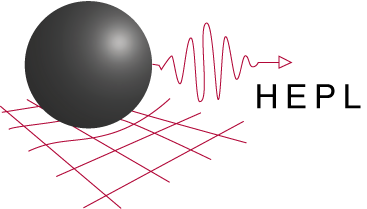News & Events
HEPL-AEROASTRO Seminar
Wednesday June 1, 2011
Markus J. Aschwanden
Lockheed Martin
Solar and Astrophysics Laboratory (LMSAL)
Self-Organized Criticality in Astrophysics
Abstract: The statistics of nonlinear dissipative events shows the ubiquitous powerlaw frequency distributions, as it has been observed first in geophysics, known as Gutenberg-Richter law for earthquakes, but also observed in forest fires, city growth, traffic jams, stock market, lottery wins, and internet access statistics.
Here we concentrate on powerlaws observed in astrophysics, such as in solar and stellar flares, magnetospheric substorms, variable stars, pulsar glitches, and gamma-ray bursts. We show some examples how such complex systems can be modeled with numerical simulations (using cellular automaton codes), analytical models, and physical models. We discuss the concept of self-organized criticality that explains the statistics of nonlinear processes and fractal structures in a universal way.
Bio: Markus Aschwanden is an Adjunct Professor of Physics and Astronomy at Rice University in Houston, Co-Investigator of RHESSI mission, Science team member of STEREO mission (SECCHI Team) and author of 200 publications in professional journals. He is also the, author of two textbooks, "Self-Organized Criticality in Astrophysics" and "Physics of the Solar Corona. An Introduction" and author of the monograph "Particle Acceleration and Kinematics in Solar Flares".
Dr. Markus J. Aschwanden has received Principal Investigator Awards: 2006-2008 NASA Sun-Earth Connection, Solar and Heliospheric Physics (SEC/SHP) proposal "Coronal MHD Waves and Oscillations" and 2003-2006 NASA Award of Living with a Star (LWS) Targeted Research and Technology (TR&T) proposal "Energy Scaling of Flares During Solar Cycle."
Time: 4:00pm – 5:30pm
Location: Physics and Astrophysics Conference Room 102/103
Light refreshments available 4:00pm; Presentation begiins 4:15pm
Open to All


